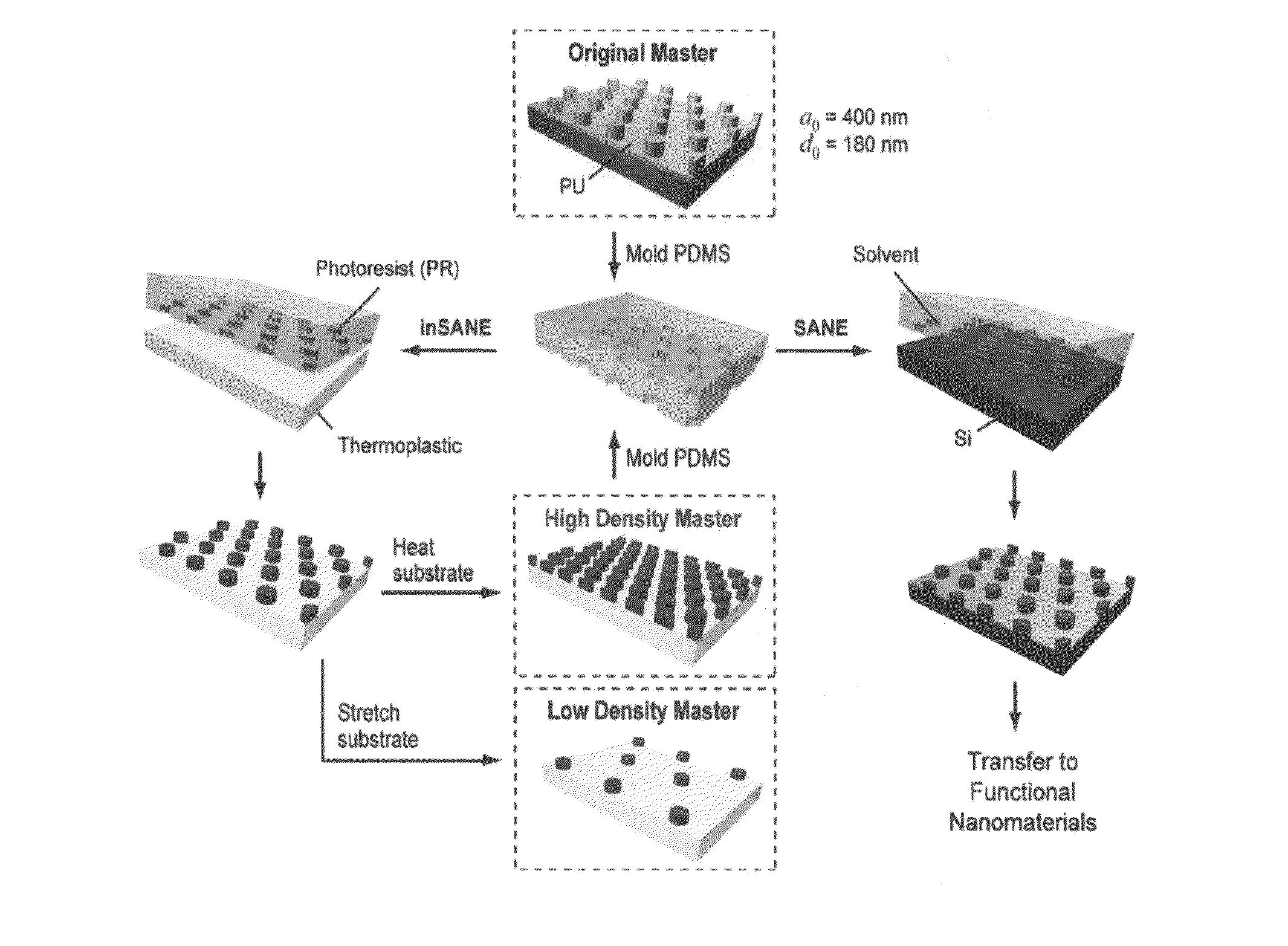Programmable soft lithography: solvent-assisted nanoscle embossing
- Summary
- Abstract
- Description
- Claims
- Application Information
AI Technical Summary
Benefits of technology
Problems solved by technology
Method used
Image
Examples
Embodiment Construction
[0015]FIG. 1 illustrates certain non-limiting aspects and embodiments of the invention. Specifically, FIG. 1 summarizes how SANE is an all-polymer, parallel nanofabrication technique that can create arrays of many different patterns. Preferably, the SANE technique can generate at least four classes of different patterns from a single master: (i) arrays with higher densities; (ii) arrays with lower densities; (iii) arrays with the same densities but with smaller critical feature sizes; and (iv) arrays with different lattice symmetries. As referred to herein, “nanopattern” or “nanoscale pattern” refers to a nanometer scale structure wherein at least one lateral dimension is between the size of an individual atom and approximately 100 nm.
[0016]SANE can thus generate a wide-range of new masters and patterns that are easily transferred into functional materials and devices by conventional fabrication methods. To demonstrate these inclusive capabilities of SANE, a large-area (6-in diamete...
PUM
| Property | Measurement | Unit |
|---|---|---|
| Fraction | aaaaa | aaaaa |
| Fraction | aaaaa | aaaaa |
| Fraction | aaaaa | aaaaa |
Abstract
Description
Claims
Application Information
 Login to View More
Login to View More - R&D
- Intellectual Property
- Life Sciences
- Materials
- Tech Scout
- Unparalleled Data Quality
- Higher Quality Content
- 60% Fewer Hallucinations
Browse by: Latest US Patents, China's latest patents, Technical Efficacy Thesaurus, Application Domain, Technology Topic, Popular Technical Reports.
© 2025 PatSnap. All rights reserved.Legal|Privacy policy|Modern Slavery Act Transparency Statement|Sitemap|About US| Contact US: help@patsnap.com



